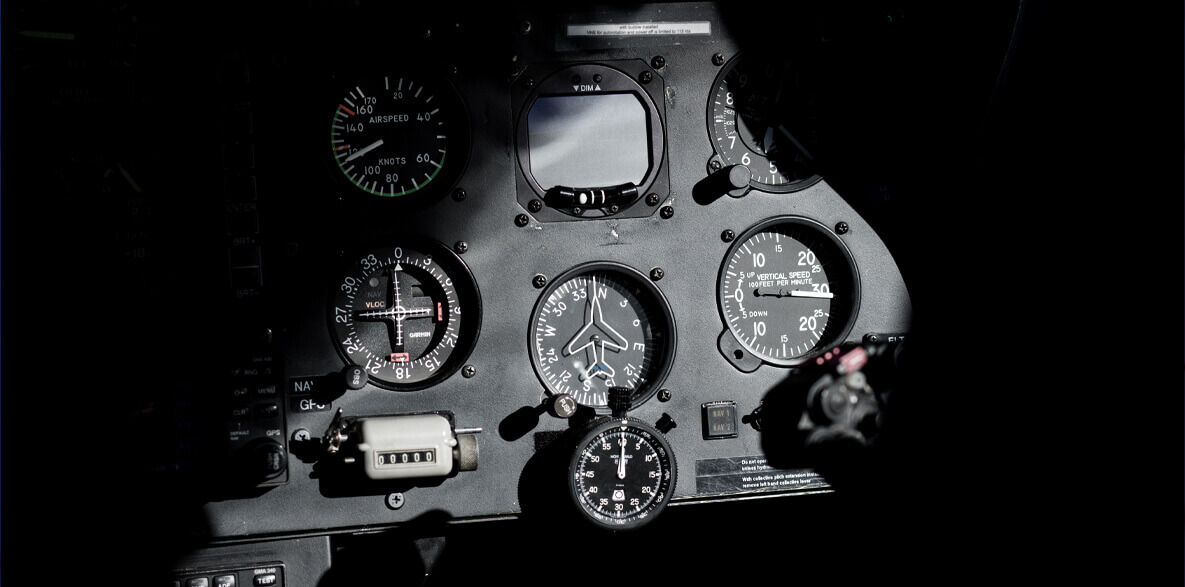
In the ever-evolving aviation industry, clear and efficient communication is the lifeline of safe and successful flights
Dual Cockpit Intercom Systems have proven to be indispensable tools in facilitating smooth cockpit interactions, ensuring both pilot communication and radio (UHF and VHF) communication. Taking this innovation, a step further, the integration of embedded squelch control in dual cockpit intercom systems enhances aviation communication to unprecedented levels of clarity and effectiveness. In this blog, we explore the capabilities and advantages of dual cockpit intercom systems with embedded squelch control, and their vital role in elevating aviation safety.

Understanding Dual Cockpit Intercom Systems
Dual Cockpit Intercom Systems are advanced communication solutions designed to enable seamless interactions between pilots within the cockpit and with ground personnel via radio communication. They encompass two critical features:
- Pilot Communication: Dual cockpit intercom systems facilitate direct and instant communication between pilots, fostering smooth information exchange during critical phases of flight and emergency situations. This internal communication capability ensures a cohesive and coordinated approach within the flight crew.
- Radio Communication (UHF and VHF): These systems integrate both UHF and VHF radios, enabling pilots to communicate with air traffic control, other aircraft, and ground stations. The dual-radio capability enhances situational awareness, flight coordination, and safety during air-to-ground and air-to-air communications.
Dual cockpit intercom systems are equipped with both UHF (Ultra High Frequency) and VHF (Very High Frequency) radios. UHF is primarily used for ground-to-ground and air-to-ground communication, while VHF is commonly used for air-to-air communication and communication with air traffic control (ATC). The integration of both radio frequencies allows pilots to seamlessly communicate with ATC, other aircraft, and ground stations, enhancing situational awareness and flight coordination.

The Power of Embedded Squelch Control
The incorporation of embedded squelch control takes the capabilities of dual cockpit intercom systems to new heights. Squelch control is a circuit or function that intelligently manages audio output, suppressing background noise and interference when the received signal strength falls below a predetermined threshold.
- Noise Suppression: In a dynamic aviation environment, background noise and interference can degrade communication clarity. Embedded squelch control actively eliminates unwanted noise, ensuring that only strong and relevant signals reach the pilots' ears.
- Improved Audio Quality: By cutting out unwanted noise, squelch control enhances audio quality, allowing pilots to receive critical instructions and messages with utmost clarity, even in challenging and noisy cockpit conditions.
- Intelligent Signal Activation: The embedded squelch control activates only when necessary, preventing audio dropout during weak signal moments. This ensures that pilots can maintain continuous communication without disruption, even during moments of low signal strength.
Dual cockpit intercom systems with embedded squelch control represent a pioneering advancement in aviation communication. By combining pilot communication, radio (UHF and VHF) communication, and intelligent noise suppression, these systems enhance safety, audio quality, and operational efficiency in the cockpit. As aviation technology continues to evolve, the future of dual cockpit intercom systems with embedded squelch control holds boundless potential, promising even more seamless and secure aviation communication for the years to come.
Let’s Get Digital
